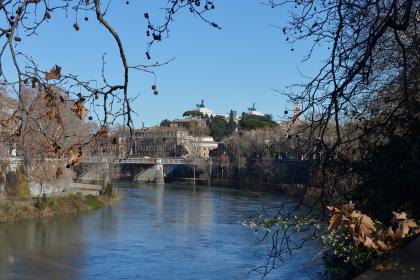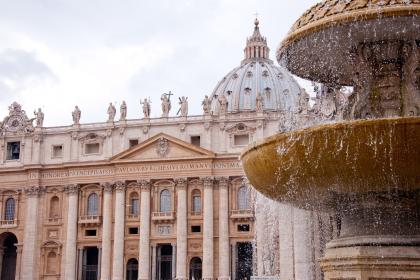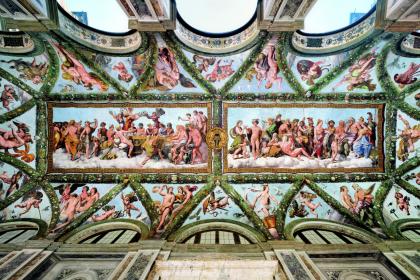
Built by Pope Sisto IV della Rovere (1471-1484) for the Jubilee of 1475, the suggestive and romantic Ponte Sisto has a postcard background from which you can see the dome of St. Peter. It allowed direct communication to Piazza Trilussa in the Rione XIII - Trastevere, and the Vatican, with the rest of the city.
Here, in ancient times, was a Roman bridge perhaps built by Agrippa, son-in-law of Augustus and dating back to 12 BC.
In 147, thanks to the restorations commissioned by Antonino Pio, it was identified as Ponte Aurelio (Pons Aurelius) or Ponte di Antonino (Pons Antonini).
Severely compromised by the flood and the subsequent flooding of the Tiber in 792, it was called Ponte Rotto until the complete reconstruction of 1473.
The bridge consists of four arches covered in travertine, has a circular opening in the center, and bears five papal coats of arms in marble. The problem of identifying the author of the project remains unresolved, Vasari's attribution to the Florentine architect Baccio Pontelli (c.1450-1492), who arrived in Rome only after its construction fell.
In 1877, after the unification of Italy, due to the growing of population and traffic, the bridge was increased by adding two metal walkways suspended on corbels along the sides to a design by Angelo Vescovali (1826-1895). Over time, due to the low resistance of the materials used, soft iron and cast iron, the two structures deteriorated without it being possible to carry out any maintenance.
lIn 2000, the architect Gaetano Miarelli Mariani created the project for the restoration of the bridge. He removed the 19th-century metal structures and had new parapets built, giving it back its 15th-century appearance, and used some original parts in travertine.
The two tombstones affixed by Sixtus IV to commemorate the construction of the bridge were removed and are now preserved from the ravages of time. In their place, the transcription of the texts was carried out on the new parapets in front of Via Giulia.
Photo turismoroma
The river Tiber

According to legend, the history of Rome begins right here
The Basilica of St. Peter in the Vatican

 Condividi
Condividi
Villa Farnesina

 Condividi
Condividi
Information
 Condividi
Condividi
Location
To find out about all accessibility services, visit the Rome accessible section.











































